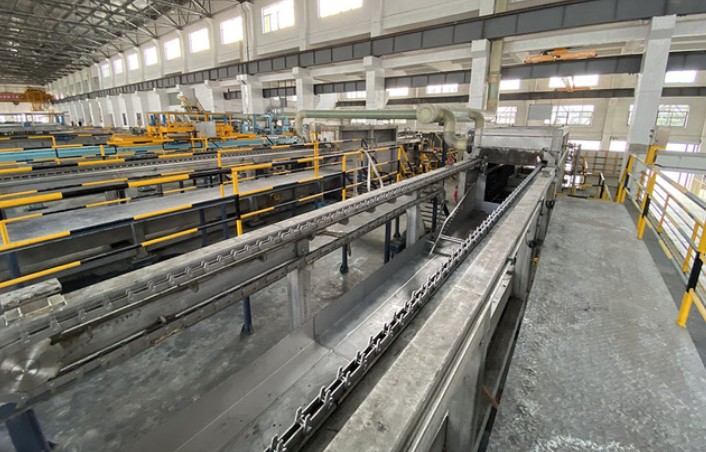NEWS&EVENTS
Maintaining the slurry electrolytic cell to extend its service life requires comprehensive management from multiple aspects such as equipment structure, process parameters, operating specifications and preventive maintenance. The following are specific measures:

I. Daily inspection and monitoring
1. Tank integrity inspection: Regularly check the inner wall, joints and welds of the tank for corrosion, cracks or leakage, and pay attention to the liquid level fluctuation area; use an ultrasonic thickness gauge to monitor the metal thickness of key parts and repair wear in time.
2. Electrode system inspection: Check the wear of the anode (such as lead-based alloys, titanium-based coatings) and cathode (such as stainless steel), and measure whether the inter-electrode spacing is uniform; monitor the tightness of the electrode connector to prevent the increase of contact resistance and local overheating.
3. Process parameter monitoring: Real-time recording of current, voltage, tank temperature, pH value and slurry flow rate to ensure that the parameters are within the design range; pay attention to changes in electrolyte composition to prevent solution imbalance and accelerated corrosion.
2. Cleaning and anti-corrosion management
1. Regular cleaning: Determine the cleaning cycle according to the scaling situation, use weak acid solution or special cleaning agent to remove calcium and magnesium deposits, and prevent hard scaling from scratching the tank lining; rinse thoroughly after cleaning to prevent residual acid from corroding metal parts.
2. Anti-corrosion coating maintenance: Regularly apply anti-corrosion coating to the inner wall of the tank and the electrode bracket, pay attention to the wear or peeling area; check the integrity of the titanium-based anode coating to prevent substrate corrosion.
3. Slurry pretreatment: Optimize the grinding process, control the slurry particle size, and reduce the erosion of large particles; add dispersants to reduce the viscosity of the slurry and prevent sediment adhesion.
3. Temperature and fluid control
1. Temperature management: Maintain the tank temperature in the optimal range, and adjust it through cooling coils or steam heating systems to prevent local overheating and deformation of the tank; regularly check the accuracy of the temperature sensor.
2. Fluid dynamics optimization: Adjust the angle and flow rate of the slurry feed port to form a uniform circulation flow field and reduce dead zone deposition; regularly check the circulation pump and pipelines to remove blockages.
IV. Electrode and Conductive System Maintenance
1. Electrode replacement strategy: formulate a replacement plan based on the anode consumption rate to prevent excessive anode consumption from causing short circuit; for reversible electrode systems, reverse polarity regularly to even out wear.
2. Conductive component maintenance: clean the oxide layer at the connection between the busbar and the electrode, apply conductive paste to reduce contact resistance; check the sensitivity of the short circuit detection device and eliminate faults in time.
V. Shutdown maintenance and repair
1. Planned shutdown and maintenance: perform a comprehensive inspection every 6-12 months, including tank flaw detection, electrode replacement, and seal renewal; shut down equipment for a long time, drain the liquid and dry it, and apply anti-rust oil.
2. Emergency maintenance plan: in case of perforation leakage, use quick repair agent to temporarily seal it, then repair welding or replace local lining; equip spare electrodes and key components to shorten maintenance downtime.
The above measures can extend the service life of the slurry electrolytic cell, improve production efficiency and reduce the cost of the entire life cycle.